I used to see my weight as just a number. But then I realized it was about how I felt every day. Switching to a healthy diet changed my energy, confidence, and how I viewed food. This journey showed me that lasting results come from balanced nutrition, not extreme restrictions.
This guide shares what I learned. It’s about building a diet that fits your lifestyle and fuels your goals. You’ll find practical steps to pair nutrition with habits that last.
Key Takeaways
- A healthy diet to maintain shape focuses on whole foods and mindful eating.
- Long-term success comes from understanding your body’s needs.
- Small, consistent changes lead to sustainable results.
- Nutrition impacts energy, mood, and physical wellness.
- Meal planning and portion control are key to avoiding guesswork.
Understanding the Importance of a Healthy Diet
Choosing the right foods isn’t just about counting calories—it’s about understanding how nutrition shapes your body and health. My path to a balanced nutrition plan began with trial and error, but it taught me lasting lessons.
My Journey Towards a Balanced Diet
Early on, I believed dieting meant cutting out everything “unhealthy.” But this approach led to frustration and setbacks. Learning to embrace variety and moderation transformed my mindset. A registered dietitian once told me: “Nutrition isn’t about perfection—it’s about progress.”
How Diet Influences Body Shape
Your diet for physical appearance directly impacts muscle growth, fat storage, and energy levels. Here’s how it works:
- Proteins build muscle, while healthy fats support metabolism.
- Carbs provide energy, but refined sugars can disrupt weight goals.
- Key vitamins and minerals ensure your body uses nutrients efficiently.
Quick-fix diets often ignore these connections, causing temporary results. A science-backed plan focuses on consistent, nourishing choices.
Key Components of a Healthy Diet
A balanced optimal body composition diet needs the right nutrients. My plan includes macronutrients and micronutrients. They help with energy, muscle growth, and losing fat.
Macronutrients: The Building Blocks of Nutrition
My focus on macronutrients is on quality and timing. Here’s how I do it:
- Proteins: I figure out my protein needs based on how active I am. For maintenance, it’s 0.7g per pound of bodyweight. I choose chicken breast, Greek yogurt, and lentils for plant-based options.
- Carbohydrates: I eat complex carbs like quinoa and sweet potatoes for workouts. I eat them before or after to use energy well.
- Fats: Avocados, nuts, and olive oil are my go-to fats. They help with hormone balance and keep me full.
The Role of Micronutrients in My Health
Micronutrients like vitamins D and magnesium are crucial. They boost my immunity and help me recover. Leafy greens give me iron and calcium. I use apps like MyFitnessPal to keep track and avoid missing out.
“A diet rich in varied whole foods supports metabolic health and body composition,” says the USDA’s dietary guidelines.
I make sure to eat foods like salmon for omega-3s and berries for antioxidants. This mix helps my body work well and keeps me on track with my goals.
Meal Planning for Success
Being consistent is crucial for a shape maintaining meal plan. I plan my meals for the week on Sundays. This way, every meal supports my fitness goals. I take time to check my work schedule and gym plans.
This helps me plan for meals after workouts or light meals on busy days.
Creating a Weekly Meal Plan
I use a simple three-step plan for my meals:
- Pick 3-4 protein sources (grilled chicken, tofu, salmon)
- Rotate veggies and grains to avoid repetition
- Set one “flex day” for social events
For example, Mondays might have quinoa bowls with roasted veggies. Fridays are for pizza nights. This mix keeps me satisfied without losing flexibility.
Shopping Tips for Healthy Eating
When I shop, I focus on the store’s edges—produce, meats, dairy. These areas have the freshest items. I check labels for hidden sugars and choose bulk bins for grains.
To save money, I buy seasonal fruits and freeze leftovers. Bringing a reusable shopping list helps me avoid buying things I don’t need.
Portion Control: Eating Right
Learning to control my food intake has been key in my weight management diet journey. Even healthy foods can lead to weight gain if eaten too much. Here’s how I manage my portions without feeling like I’m missing out.
How I Manage Portions
I used to think “healthy” meant I could eat as much as I wanted. But now, I’ve found simple ways to keep my portions in check:
- Eating from salad plates to shrink plate size
- Pausing halfway through meals to assess hunger
- Packaging snacks into single-serving containers
🚀 Special Offer! Don’t Miss Out!
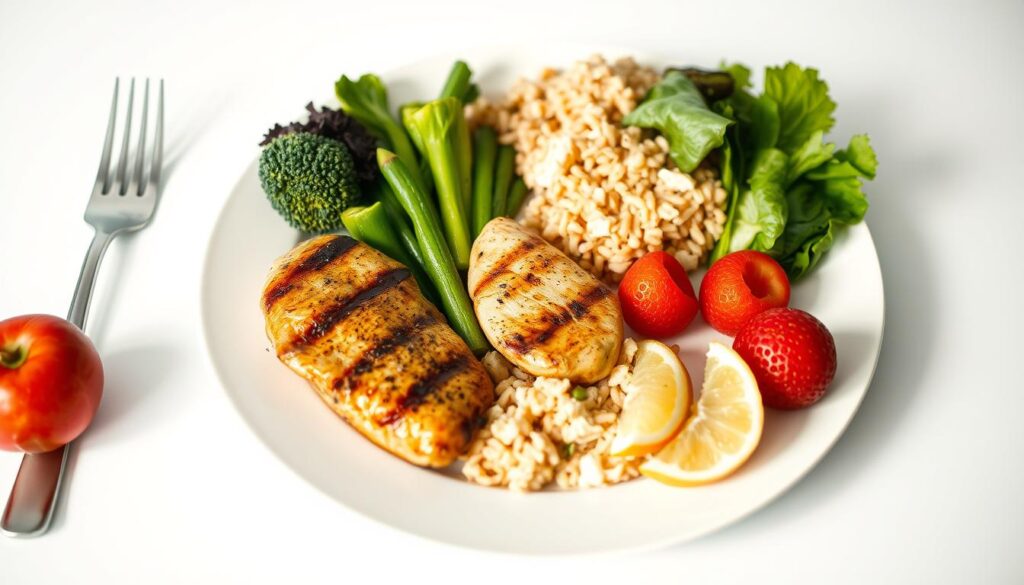
Visual Aids for Portion Sizes
My hands have become my best guide for portion sizes. Here’s how I use them every day:
| Food Group | Portion Guide |
|---|---|
| Protein | Size of my palm (3-4 oz) |
| Vegetables | Size of my fist (1 cup) |
| Carbs | My cupped hand (½ cup grains/pasta) |
On active days, I add an extra carb serving before working out. No need for scales or apps, just my hands!
Incorporating Whole Foods into My Diet
Switching to whole foods changed how I eat for my body shape. I started eating more whole grains and fresh produce. This boost my energy and helped me reach my fitness goals.
Benefits of Whole Grains
White bread made me hungry too fast. But whole grains keep me full longer. My favorites are:
- Quinoa in salads or as a rice substitute
- Brown rice paired with lean proteins
- Oats topped with nuts and seeds for breakfast
These foods help me manage my weight and recover from workouts.
Fresh Fruits and Vegetables: My Daily Picks
I aim for 5-7 servings of colorful produce every day. Eating seasonal fruits and veggies saves money and tastes better. Here’s how I do it:
- Prep: Roast veggies weekly for quick meals
- Snacks: Apple slices with almond butter or carrot sticks
- Plating: Mix spinach, kale, and berries in every meal
“Aim for a rainbow of colors on your plate daily,” advises registered dietitian Sarah Green. “Variety ensures nutrient coverage for optimal body function.”
These changes made healthy eating for body shape a lasting part of my life, not just a quick fix.
The Power of Hydration
Hydration is key to my stay in shape eating habits. I used to think I was hungry when I was really thirsty. Now, I drink more water to keep my energy up and stop eating when I shouldn’t.
How Much Water I Really Need
My water needs change based on my weight. I figure out my daily water by dividing my weight in pounds by two. For instance, 150 lbs = 75 oz daily. I add more water when I’m working out or it’s hot outside.
| Body Weight (lbs) | Base Daily Water (oz) |
|---|---|
| 120 | 60 |
| 160 | 80 |
| 200 | 100 |
Alternatives to Sugary Beverages
I’ve stopped drinking soda and juice. Instead, I drink:
- Infused water with berries + mint
- Sparkling water with sliced citrus
- Herbal teas (chamomile, ginger)
My favorite drink is cucumber + lemon water. It’s tasty and keeps me hydrated without extra calories.
Healthy Snacking Options
Healthy snacking is crucial for me to keep my shape. I choose snacks that are full of nutrients. This way, I stay full and keep my diet on track.
My Favorite Nutrient-Dense Snacks
I look for snacks that are tasty and good for me. Here are some of my favorites:
- Plain Greek yogurt with mixed berries and walnuts: It’s high in protein and fiber, which helps me feel full.
- Carrots and cucumber sticks with hummus: They’re low in calories but full of vitamins.
- Handful of roasted edamamame beans: They’re a plant-based protein source that keeps me from overeating.
These snacks help me feel full longer. This way, I don’t overeat during meals.
Avoiding Unhealthy Snack Traps
It’s easy to fall into unhealthy snacking habits. Like office candy jars or hidden sugars in “diet” snacks. Here’s how I stay on track:
| Snack Trap | Solution |
|---|---|
| Packaged bars with added sugars | Make homemade energy bites with oats, peanut butter, and dark chocolate chips. |
| Emotional eating | Keep pre-portioned veggies or nuts in my bag to avoid impulsive choices. |
Carrying snacks like roasted chickpeas or rice cakes with almond butter helps me avoid vending machine temptations. To maintain my shape, I plan ahead. I never let hunger lead to bad choices.
The Role of Meal Timing in My Diet
Meal timing is more than just about diet for body shape control. It’s about matching food with my body’s natural cycles. I found that changing my focus from “what I ate” to “when I ate” boosted my energy and shape goals. This change took some trial and error, but it was all worth it.
💪 Transform Your Life with Health!

My journey with meal timing started with intermittent fasting. I tried the 16:8 method and a modified 14:10 plan. At first, I had trouble with timing workouts because eating too close to bedtime made me feel slow. But when I adjusted my eating window to match my most active hours, I noticed a big improvement.
Studies show that fasting can improve insulin sensitivity. I also had fewer cravings at night when I followed a set schedule.
Intermittent Fasting: What I Learned
“Time-restricted eating can optimize metabolic health without calorie counting,” says Harvard Health Publishing.
- Benefits: Better focus in the morning, reduced bloating.
- Challenges: Adjusting social meals took creativity—like packing snacks for evening events.
How Meal Frequency Affects My Energy
Switching to three balanced meals a day instead of six small ones helped me avoid midday energy crashes. Here’s what worked:
- Breakfast by 9 AM: Prevents overeating later.
- Lunch with protein: Keeps me fueled until dinner.
Playing with meal frequency taught me that being consistent is more important than being strict. Small changes, like exercising at the same time as meals, helped keep my energy up without losing sight of my diet for body shape control goals.
Sweets and Treats: Moderation is Key
Keeping a healthy diet doesn’t mean you have to give up sweets. I aim for 80% of my food choices to be healthy and save 20% for treats. This way, I avoid feeling deprived and keep my diet plan working.
My Approach to Desserts
I see desserts as special rewards, not off-limits foods. When I want something sweet, I pick wisely. For instance, a small piece of dark chocolate (70% cocoa or higher) is a great choice. It’s full of antioxidants and has less sugar than regular candy bars.
Having treats planned, like a slice of birthday cake, helps me stay on track. It makes my diet plan more enjoyable and sustainable.
Healthier Alternatives I Love
- Dark chocolate-dipped strawberries: naturally sweet with antioxidants
- Protein mug cakes: made with almond flour and stevia for a moist, low-sugar treat
- Greek yogurt parfaits with berries and a drizzle of honey: creamy and filling
My taste buds have changed over time, and now, desserts with lots of sugar taste too sweet. Using natural sweeteners like dates or applesauce in recipes has been a big help. Moderation is about enjoying treats without feeling guilty or giving up.
Staying Motivated on My Diet Journey
Staying motivated is more than just meal plans and recipes. It’s about your mindset. Here’s how I keep my focus:
Setting Realistic Goals
I stopped chasing specific weight numbers. Now, I focus on daily actions like prepping meals or eating five veggies daily. SMART goals are best: Specific, Measurable, Achievable, Relevant, Time-bound. For example:
- Specific: “Pack a salad for lunch Monday-Thursday”
- Measurable: “Drink 8 cups of water daily”
⚡ Start Your Transformation Today!

Celebrating Small Wins
My journal tracks non-scale victories. When energy spikes after cutting sugar? I note it. Better sleep after reducing caffeine? Celebrate that too. Rewards matter: buying resistance bands instead of candy bars keeps me on track.
“Progress isn’t always a number on a scale.”
Weekly check-ins help adjust goals. When plateaus hit, I remind myself: consistency builds results over months, not days. Small steps add up—every win fuels the next.
Overcoming Challenges to Maintain My Diet
Keeping up with a healthy eating plan can be tough. Cravings and social events often test our willpower. Here’s how I tackle these challenges:
Dealing with Cravings and Temptations
I ask myself: “Is this hunger or emotion?” before grabbing snacks. A 15-minute walk often changes my mind. I also avoid keeping trigger foods at home to prevent impulse eating.
When cravings are too strong, I opt for small portions. For example, I might choose one square of dark chocolate instead of a whole bar.
- Use the “15-minute rule” to delay impulsive choices
- Replace full-size treats with 100-calorie portions
- Keep healthy snacks visible (apples, nuts) and junk food hidden
Strategies for Dining Out
My meal planning also applies to eating out. I check menus online and ask for special requests like salad dressings on the side. At Italian restaurants, I choose pasta with marinara instead of creamy sauces.
At parties, I share desserts with friends to stay on track. This way, I enjoy social events without straying from my diet.
“Planning ahead turns social eating into opportunities, not obstacles.” — Registered Dietitian Magazine
Using portion control tricks helps me avoid overeating. I ask for a to-go box upfront. Apps like OpenTable also let me find menus that fit my dietary needs. These strategies help me stay on track without feeling deprived.
Long-term Benefits of a Healthy Diet
Starting a healthy diet has changed more than my looks. It has brought lasting benefits to all areas of my life. By choosing balanced nutrition, I’ve built a strong base for long-term success.
Improved Health and Well-Being
My blood tests show better cholesterol and blood sugar levels. I sleep better than ever. Days feel more energized, and I stay focused.
Even small illnesses pass quickly because my immune system is strong. These changes show that taking care of my body is key to feeling my best.
Maintaining My Ideal Shape for Life
I no longer see healthy eating as a quick fix. It’s now a natural part of my life, not just rules to follow. When life gets busy, I adjust without losing sight of what’s important.
I love trying new recipes and snacks that are full of nutrients. This keeps my approach exciting. Being flexible helps me stay on track without feeling left out. Every choice I make helps me reach my goals, no matter what comes my way.
FAQ
What is a balanced nutrition plan for maintaining shape?
How do I create a weight management diet that works for me?
Can you suggest a shape-maintaining meal plan?
What habits help me stay in shape?
How do I control my body shape through diet?
What’s my approach to snacking while trying to maintain shape?
How do meal timings impact my diet and body shape?
How do I make healthier choices when dining out?
What long-term benefits have I noticed from maintaining a healthy diet?
Did you like this article? See also: https://powerfitguide.com/supercharge-your-body-with-antioxidant-rich-foods/

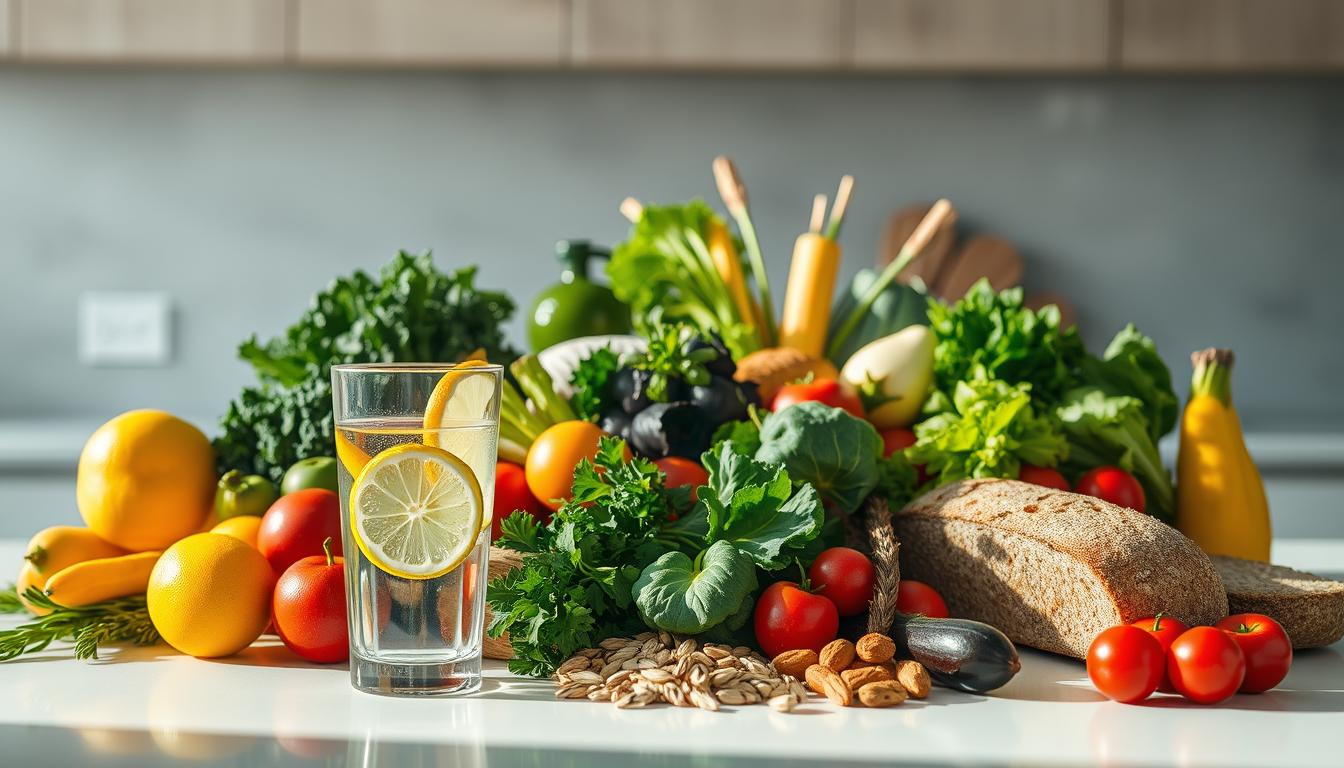


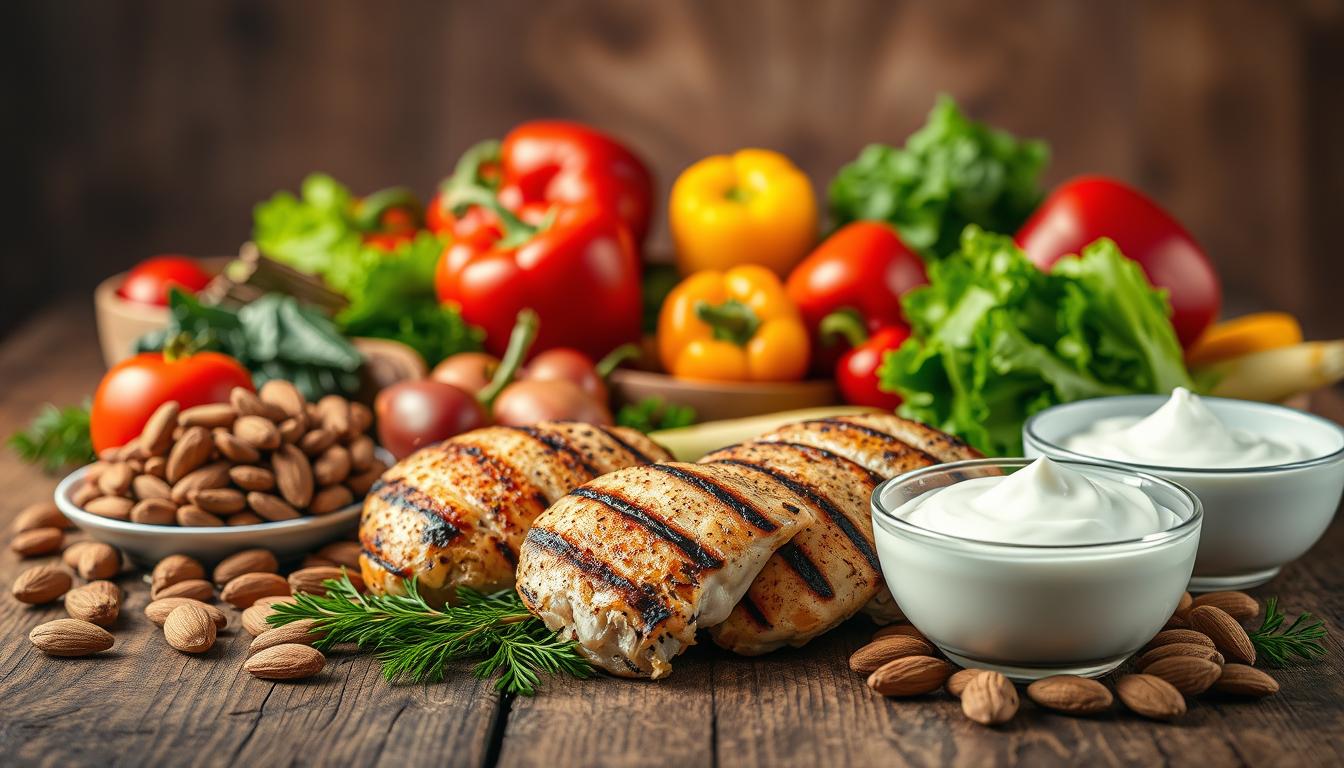
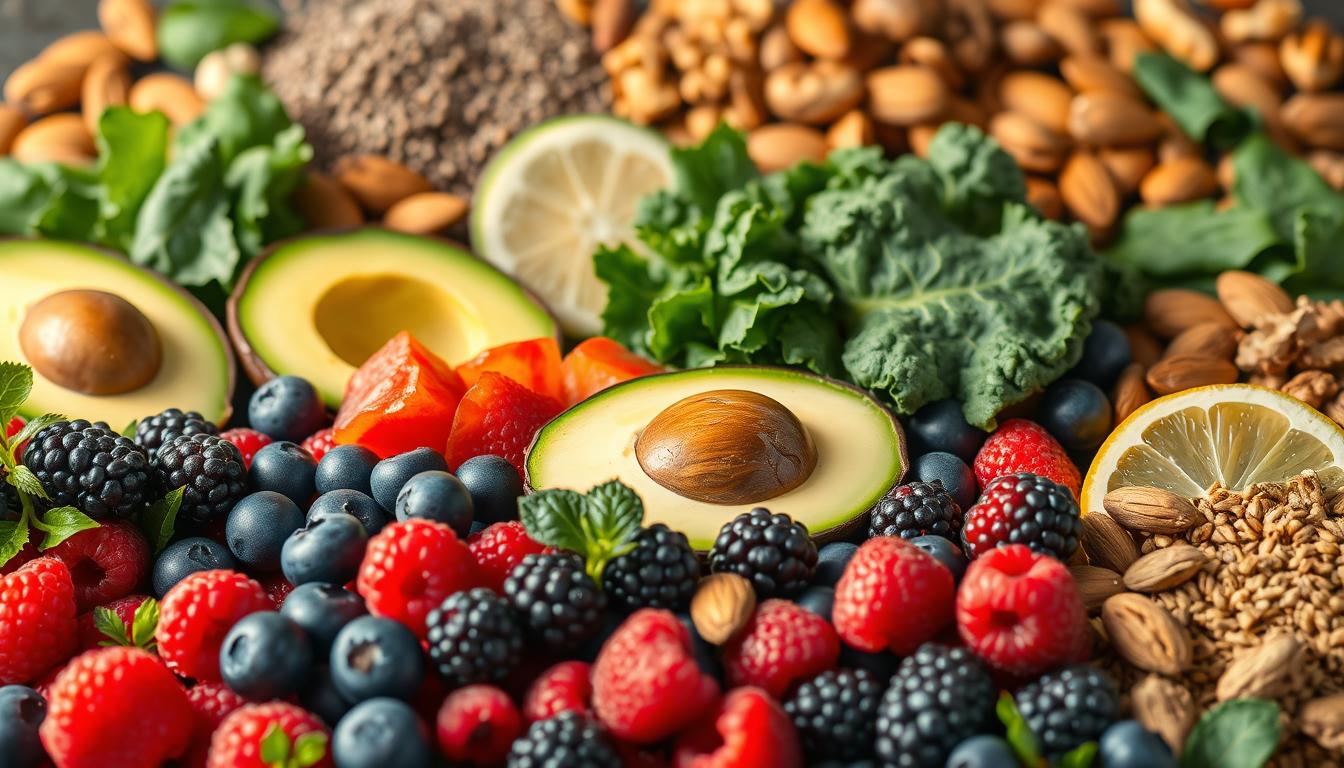

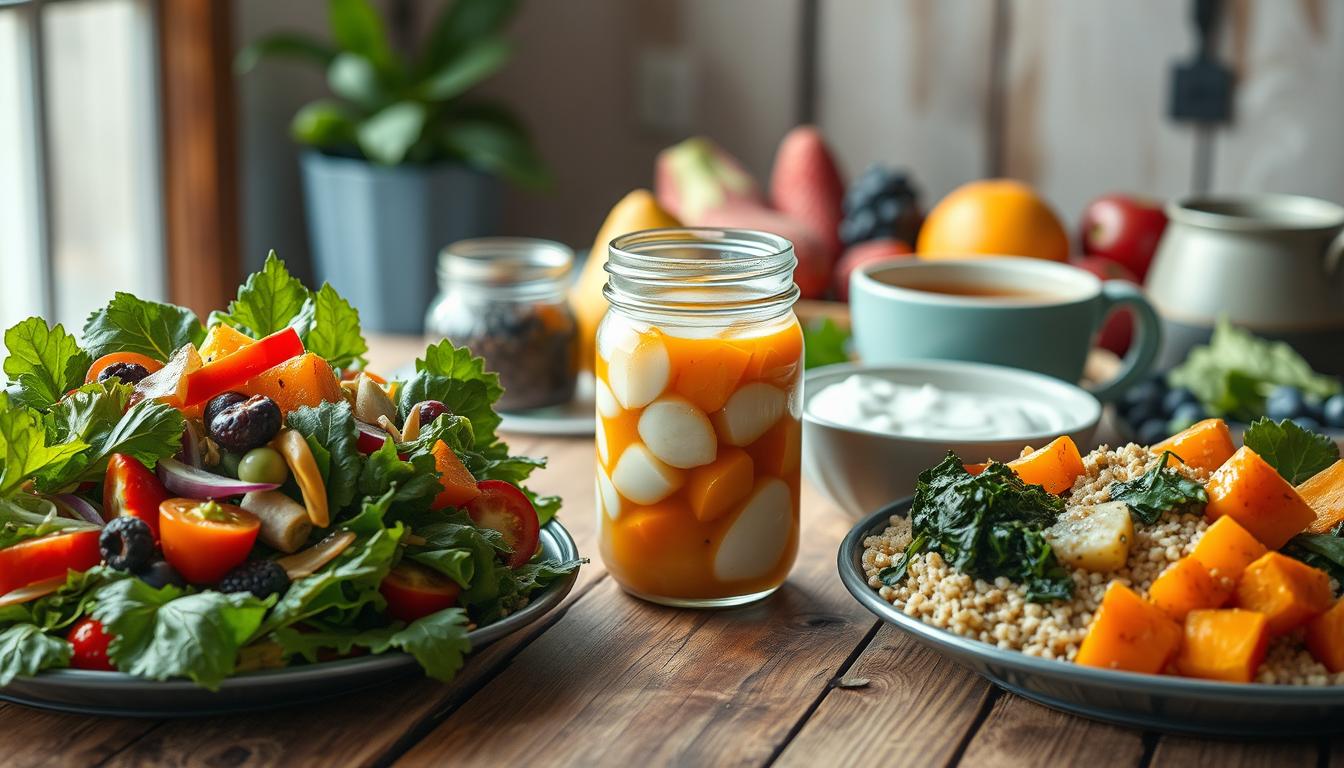
Comments on “Maintain Your Ideal Shape with This Healthy Diet Plan”